When we first started WPBeginner back in 2009, we had one main goal: teaching people how to succeed with WordPress. Even though we’ve now spent 16+ years helping more than 2 million people build their WordPress websites, we totally understand if you’re feeling overwhelmed right now.
You might be wondering whether to use WordPress.com or WordPress.org, why you need to pay for hosting if WordPress is free, or if you’ll need to learn coding. These are questions that we hear from our readers every day.
In this guide, we will show you how to make a WordPress website the right way. Whether you’re looking to launch a simple blog or a site for your online business, we will teach you everything you need to know.
Don’t worry – you won’t need any technical skills or coding knowledge. Simply follow our simple instructions, and you’ll have your website up and running today.
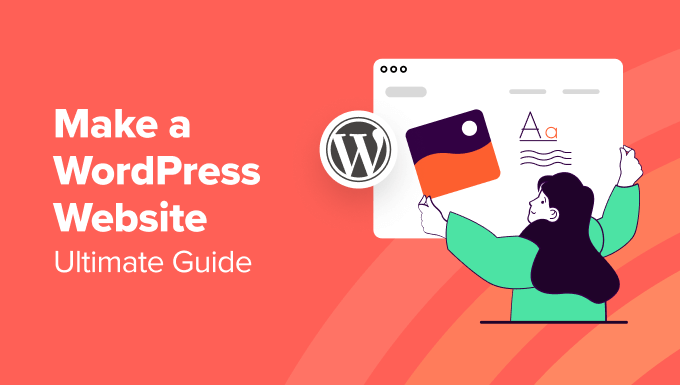
We will walk you through everything, from setting up WordPress to adding your first pages and installing must-have plugins. We will also share the tried-and-tested tools and methods we use to build successful WordPress websites.
But if you need more assistance, our team will happily set up your WordPress website for FREE.
→ Click Here to Get Your Free WordPress Website Setup! ←
Choosing a Website Platform: WordPress.com vs. WordPress.org
💡Editor’s Note: This article recommends WordPress.org since it gives you full freedom. If you’d rather skip this section and cut straight to the chase, you can go ahead and start reading the tutorial
Before we start building your website, let’s clear up something important. There are two types of WordPress: WordPress.com and WordPress.org. Yes, this confuses many beginners, but don’t worry – we will make it simple.
WordPress.org is the popular open-source software that powers over 43% of all websites on the internet. It’s often called ‘self-hosted WordPress’ because you’ll need to get your own hosting and domain name to use it.
The key benefits of using WordPress.org are complete control over your website, the ability to install any plugins and themes you want, and full ownership of your content. However, you’re responsible for hosting, updates, and maintenance.
Meanwhile, WordPress.com is a hosting service that uses the WordPress.org software. Although it has a free plan, it offers limited functionality and doesn’t let you customize it the way you want. Plus, features like installing plugins and themes are only available on higher-tier plans, starting at $25/month.
| WordPress.org | WordPress.com | |
|---|---|---|
| Customization | Complete control | Limited by plan tier |
| Hosting | Self-managed | Included in all plans |
| Plugins & Themes | Install any you want | Available on Business plans and up ($25/mo) |
| Monetization | Complete freedom | Limited by plan tier |
| Maintenance | Self-managed | Handled for you |
| Best For | Complete website control | Hands-off hosting |
You can also check out our infographic that compares WordPress.org, WordPress.com (Free), and WordPress.com (Business).
While WordPress.com might seem easier at first, we’ve noticed that most users quickly outgrow its limitations. With WordPress.org, you’ll have full control from day one.
That’s why this guide focuses on creating a website with WordPress.org. We will show you the exact process we’ve used to help thousands of beginners build successful websites.
Here are the steps we will cover, and you can use the links below to skip to your preferred topic:
- Step 1: Define Your Website Goal
- Step 2: Choose a Domain Name & WordPress Hosting
- Step 3: Install WordPress
- Step 4: Choose a Website Layout
- Step 5: Create Essential Pages and Blog Posts
- Step 6: Customize Your Website
- Step 7: Install Must-Have WordPress Plugins
- Step 8: Master WordPress
- Step 9: Take It Further
- Frequently Asked Questions About Making a Website (FAQs)
Let’s get started!
Step 1: Define Your Website Goal
First things first, let’s talk about what you want to achieve with your website. One common mistake we often see is people jumping straight into design and features without having a clear goal in mind. This often leads to wasted time and a website that doesn’t serve its purpose.
At WPBeginner, our main goal is to help people learn WordPress. This shaped how we built our website: clear navigation to find tutorials easily, free resources that are simple to access, and an email newsletter to share WordPress tips.
Your website goal might be different. Here’s what different types of websites typically focus on:
| Website Type | Main Goal | Key Features Needed |
|---|---|---|
| Business Site | Generate Leads | Contact forms, email signup, testimonials |
| Online Store | Make Sales | Product pages, shopping cart, payment system |
| Affiliate | Promote Products | Product reviews, comparison tables, tracking links |
| Membership | Restrict Content | Member login, subscription plans, protected pages |
| Education | Teach Skills | Course pages, member access, progress tracking |
| Portfolio | Showcase Work | Image galleries, project pages, contact info |
| Blog | Share Content | Clean layout, categories, search function |
Also, it’s normal if your website has multiple goals.
For example, our partner website OptinMonster has the goal of selling their lead generation software product. But they also have a blog with the goal of educating readers about conversion optimization and growing their businesses.
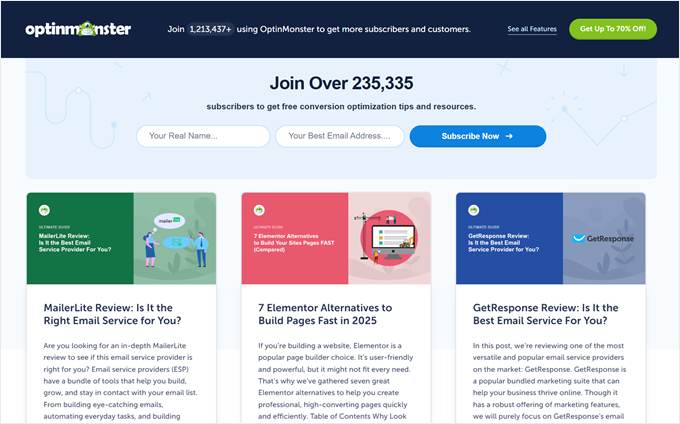
That being said, it’s important to define a main goal because it will decide what call-to-action to highlight and how to steer users in that direction. This clarity will help you make better decisions about your website’s design, features, and content strategy.
Now that you have a clear picture of what kind of website you want to build, let’s move on to the next step.
Step 2: Choose a Domain Name & WordPress Hosting
To use WordPress.org to build your website, you will first need a domain name and WordPress hosting. Many new website owners confuse domain names with hosting or think they’re the same thing. Let’s break it down.
A domain name is your website’s address on the internet. Think of it as your website’s street address.
For example, our domain name is wpbeginner.com – that’s what people type into their browser to find us.
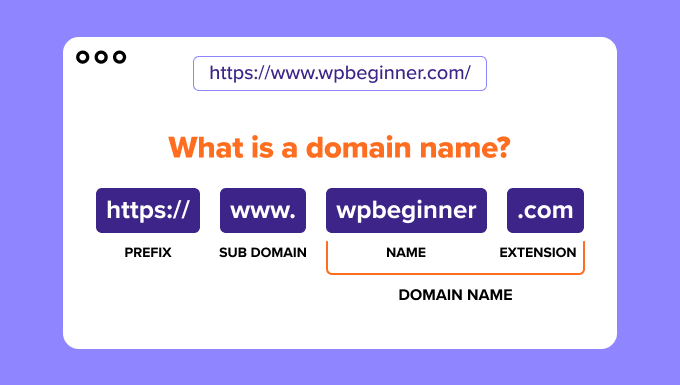
Domain names typically cost around $14.99 per year, with prices varying based on the extension (.com, .org, .net, etc.).
On the other hand, WordPress hosting is where your website’s files actually live. If your domain name is your street address, then hosting is the actual house. It’s where all your website’s content, images, and files are stored.
These days, you’ll find dozens of WordPress hosting providers offering different types of hosting plans. You’ll see shared hosting, managed WordPress hosting, VPS hosting, and more. We know it can feel overwhelming.
Our recommendation? Go with Bluehost. Here’s why we love them:
- They offer a free domain name (worth $14.99) for the first year. That also means you don’t need to worry about connecting a third-party domain registrar with your web hosting!
- They’re WordPress.org’s longest-running recommended host (since 2005), which means they really know their stuff when it comes to WordPress.
- They’re affordable and offer plans for everyone, perfect for new website owners.
Our founder, Syed Balkhi, is also a big fan of Bluehost:
I’ve been recommending Bluehost since 2012, and their commitment to quality has only improved over the years.
I host several personal and business websites on Bluehost. Their ease of use and reliability make them a go-to choice for me.
Whether you’re just starting or looking to grow your online presence, Bluehost offers a solid hosting platform to build on.

Founder of WPBeginner
If you need more information, then we’ve covered the hosting provider in more detail in our complete Bluehost review.
The best part? Bluehost is offering our readers a free domain name and a huge discount on web hosting. All you need to do is click on the button below to claim the offer. You can also use our Bluehost coupon code to get up to 83% off!
→ Click Here to Claim This Exclusive Bluehost Offer ←
Note: We believe in being transparent with our readers. If you use our Bluehost link, then we’ll earn a commission – but at no extra cost to you. In fact, you’ll get special discounts, including hosting, a free domain name, and free SSL security. While we could earn commissions from any hosting company, we only recommend services we personally use and trust.
Let’s go ahead and purchase a domain name and hosting.
First, you’ll need to go to the Bluehost website in a new browser window and click on the green ‘Get Started Now’ button.
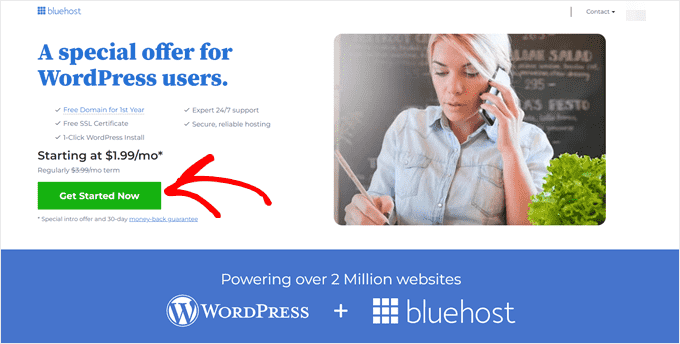
This will bring you to a pricing page where you will need to choose a hosting plan for your website.
Basic and Choice Plus plans are the most popular choices among our users.
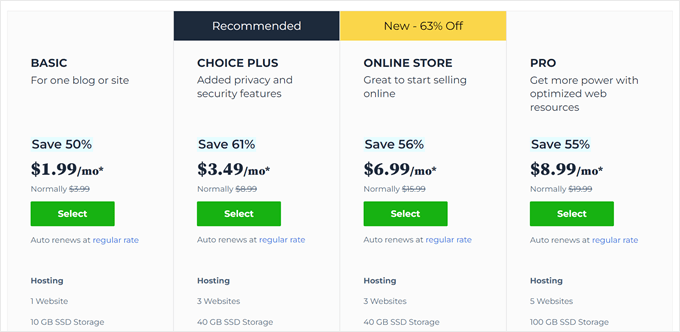
You’ll need to click on ‘Select’ to choose the plan that you like and continue to the next step.
On the next screen, you’ll be asked to select a new domain name.
Ideally, you should stick to a .com domain name. Make sure it is related to your business, easy to pronounce and spell, and easy to remember.
Need help with choosing a domain name for your website? See these tips and tools on how to choose the best domain name.
After choosing your domain name, just click on the ‘Next’ button to continue.
Now, you’ll be asked to provide your account information, such as name, address, email, etc.
On this screen, you will also see optional extras you can purchase. We generally don’t recommend purchasing these extras, but you can always add them later if you decide that you need them.
Next, you will add your payment information to finish the purchase.
After completing your purchase, you’ll receive an email with details on logging in to your web hosting dashboard.
This is your hosting account control panel where you manage everything, like getting support, setting up emails, and so on. Most importantly, this is where you’ll install WordPress.
Step 3: Install WordPress
When you sign up with Bluehost using our link, they will automatically install WordPress for you. They launched this one-click WordPress installer to make it easier for non-techy users to create their websites.
What this means is you simply need to log in to your Bluehost account and head to the ‘Websites’ tab from the menu on the left. From here, simply click the ‘Edit Site’ button.
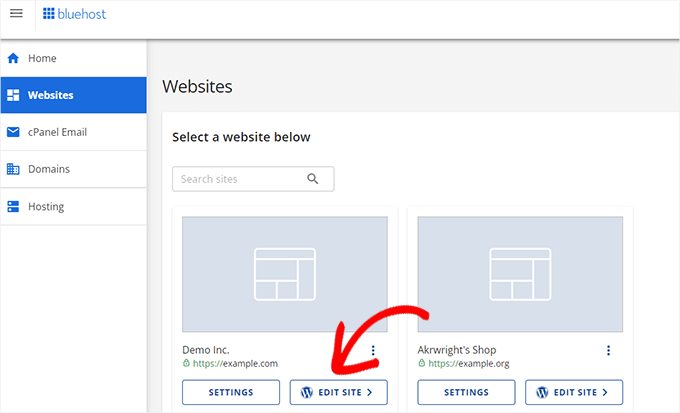
You can also log in to the dashboard by going to your WordPress login URL (e.g., example.com/wp-admin/) directly from your browser.
If you are using a different WordPress website hosting service like SiteGround, Hostinger, or HostGator, then you can see our detailed guide on how to install WordPress for step-by-step instructions for those providers.
Once WordPress is set up, you’re ready to continue building your website.
Wasn’t that easy?
Now, let’s move on to the next step and choose a design for your website.
Step 4: Choose a Website Layout
By default, your WordPress website will use a basic WordPress theme, like this:
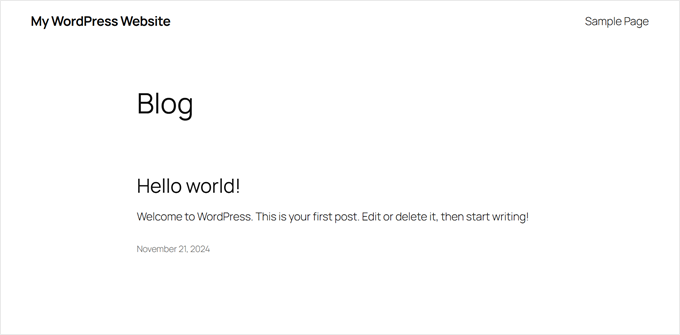
While this default layout works fine, it won’t help your website stand out from the crowd.
In WordPress, a layout is called a theme, which is a collection of files that control how your website looks and feels. Think of it as your website’s outfit – it determines colors, fonts, layout structure, and overall design without changing your actual content.
One of the things we love about WordPress is the incredible variety of themes available. Whether you’re building a small business website, an online store, or a personal blog, there’s a perfect theme for your needs.
In the past, switching to a new web design involved hiring a website developer, which was expensive and time-consuming. However, the process is now so much easier. I just need to choose a WordPress theme that works for my site, install it, and activate it. That’s way quicker than looking for a developer or coding a theme from scratch.
John Turner – SeedProd
Installing a theme is straightforward. Just go to Appearance » Themes in your WordPress dashboard and click ‘Add New Theme’.

You’ll find over 11,000 free themes in the official WordPress.org directory, including Neve and OceanWP.
For step-by-step instructions, you can check out our beginner’s guide on how to install a WordPress theme.
That said, we know all these options can feel overwhelming. Between the thousands of free themes and countless premium options, choosing the right one can be challenging.
Here are the questions we ask when selecting a WordPress theme:
- Is it mobile-friendly? With over half of web traffic coming from mobile devices, your theme needs to be responsive and look great on all screen sizes.
- Does it load quickly? A slow-loading theme can hurt your search rankings and cause visitors to leave your site.
- Is it compatible with major plugins? Your theme should work well with the plugins you will use to avoid functionality issues later.
- When was it last updated? Regular updates mean better security and compatibility with the latest WordPress version.
- Does it match your website’s purpose? For example, if you’re building an online store, make sure your theme has features like product galleries to highlight what you sell.
- What’s your budget? Not all free themes are poor quality, and not all premium themes have the best support. See our comparison of free vs. premium WordPress themes for more information.
If you’re not sure where to start with your theme search, then we have compiled a list of the most popular WordPress themes, hand-picked by our experts.
At WPBeginner, we actually use a custom theme built on the Genesis framework. This gives us complete control over our design and helps us create the exact user experience we want for our readers.
Want that level of customization for your website? We recommend using SeedProd, which is a powerful theme and page builder that comes with over 350 ready-made theme templates. You can choose any template and customize it to match your vision perfectly.
SeedProd even includes an AI website builder that can create a complete website in under 60 seconds. You can watch the video below to see how it works:
Subscribe to WPBeginner
The best part? You don’t need any coding knowledge to use SeedProd. It’s all drag-and-drop, making it perfect for beginners who want professional results.
At this stage, you don’t need to finalize all theme settings right away. You can customize it much better once you have some content on your website.
💡Need help designing your WordPress site? Let WPBeginner Pro Services bring your vision to life. Our experienced designers can create a custom WordPress website for you at affordable prices. Get Our WordPress Website Design Services Today!
Now, let’s see how to add content to your WordPress site.
Step 5: Create Essential Pages and Blog Posts
WordPress comes with two default content types: pages and posts. Let’s see how to use each one effectively.
Pages are for static, timeless content like your about page, contact page, and privacy policy. Think of them as the foundation of your website – they rarely change, and visitors expect to find them easily.
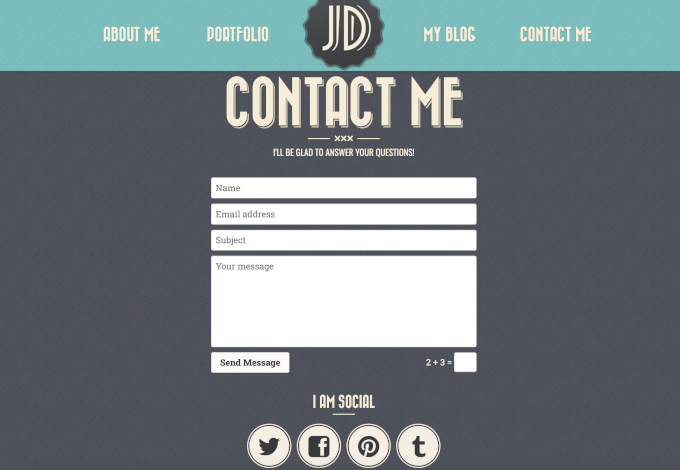
Posts, on the other hand, are for your blog content and appear in reverse chronological order (newest first).
They’re perfect for regular updates, news, or any content you publish frequently.
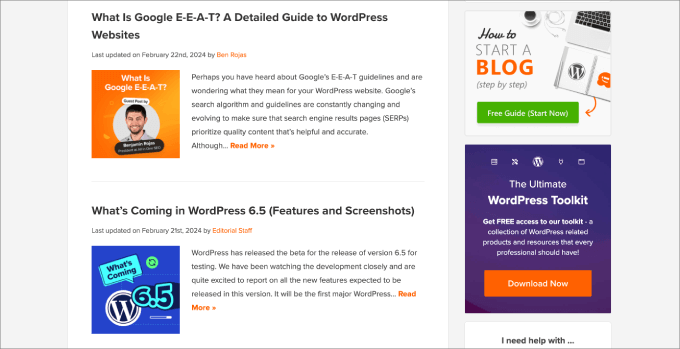
Whether you need both types depends on your website’s purpose. If you’re building a simple business website, you might only need pages. But if you plan to share regular updates or create content marketing, you’ll want to use posts, too.
By default, WordPress shows your latest blog posts on your homepage. However, most business websites prefer a custom static front page instead or use a separate page for blog posts.
Don’t worry – you can easily change this in your settings. You can read our detailed guide on creating a custom homepage to do this and our article on disabling blog features in WordPress if you don’t need them.
Our tip is to start a WordPress blog anyway, even if you’re not planning to write any content right now.
A lot of our WordPress business websites have a blog section, even if their main goal is to sell a product. This is because blogging allows you to establish expertise in your field, increase traffic from search engines, and connect with your target audience.
Now, let’s add some content to your website. Don’t worry if you don’t have enough content right away – you can always edit and update later.
To add either a page or post, head over to your WordPress dashboard. Click Pages » Add New for a page, or Posts » Add New for a blog post. Both use the same editor screen, which looks like this:
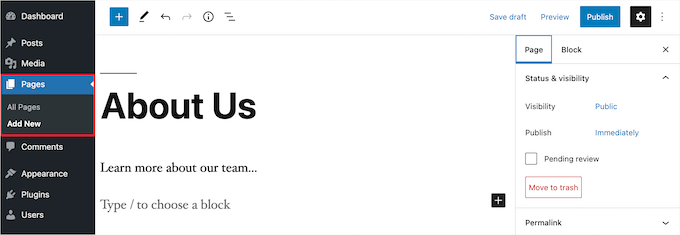
First, add your title at the top.
Then use the editor below to add your content – you can include text, images, videos, and more. If you need help with the editor, check out our beginner’s guide on how to use the WordPress block editor if you need help.
One thing you may notice is that posts have extra settings like categories and tags. You can use them to organize your blog content and help readers find the right information.
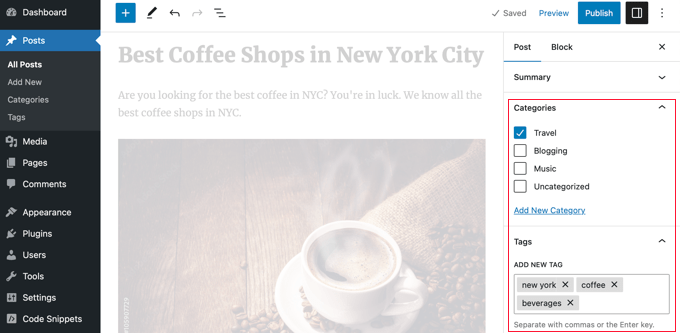
When you’re done, you can either save it as a draft to finish later or click ‘Publish’ to make it live on your website.
Not sure which pages to create first? Check out our list of essential pages every WordPress website should have.
Step 6: Customize Your Website
Now that you have created some content for your website, let’s make it look professional and work smoothly for your visitors. Let’s start with some basic but important settings.
First, let’s change your site title and tagline. These appear in search results and at the top of your website, so they’re often the first thing visitors see. You can head over to Settings » General to update these:
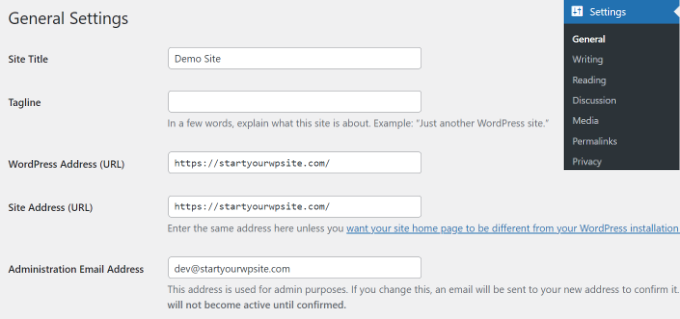
If you’re planning to have a blog section, you’ll want to set up your comment settings next by going to Settings » Discussion. This helps prevent spam and keeps discussions meaningful.
For more details, check out our beginner’s guide to WordPress comment moderation.
Next comes theme customization. The exact process varies depending on your theme but typically involves setting up:
- Your site logo and favicon
- Navigation menu
- Color scheme
- Custom fonts
- Header, footer, and sidebar
- Widget areas (for classic themes)
Sounds like a lot? Don’t worry. Our guide on key WordPress design elements walks you through exactly which parts of your site you need to customize.
We’ve also written an ultimate guide on how to edit a WordPress website. The reason we created this article is that WordPress offers so many ways to customize your theme, and you may need pointers on which method is best for your needs and skill level.
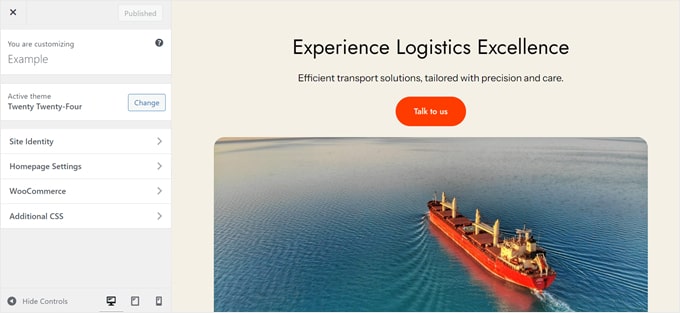
Here are some other important customizations to consider:
- Setting your date and time format
- Setting up 404 error pages
- Adding social media icons
- Creating a custom WordPress login page
Step 7: Install Must-Have WordPress Plugins
Have you noticed how some websites have special features like contact forms, popups, lightbox photo galleries, and so on? These are all made possible with WordPress plugins.
WordPress plugins are like apps for your WordPress site. They allow you to add features and customizations without needing to write any code. There are currently more than 59,000 free plugins available, plus many premium options from third-party developers.
With this many plugins, how do you find which ones to install? Our rule of thumb is to go with plugins that are:
- Regularly updated
- Well-reviewed by users
- Compatible with your WordPress version
- From reputable developers
- Focused on solving your specific needs
If you want to learn more about choosing the right plugins, check out our detailed guide on how to choose the best WordPress plugin.
But regardless of the website type, we believe all WordPress websites can benefit from the following plugins:

Connects your site with Google Analytics to track visitor behavior
What we like: See key stats right in your WordPress dashboard without opening Google Analytics.
Paid plans start from $99.60/yr
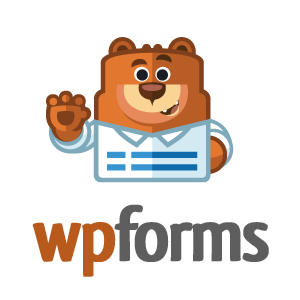
Creates any type of form, from contact forms to payment forms
What we like: Drag-and-drop form builder makes it easy to create professional forms in minutes.
Paid plans start from $49.50/yr

Optimizes your website for search engines and higher rankings
What we like: Simplifies complex SEO tasks with automatic XML sitemaps and custom SEO settings.
Paid plans start from $49.60/yr
We consider these three plugins absolutely essential because they allow you to track your site performance, communicate with your visitors, and boost your website’s search engine rankings.
Besides these three must-have WordPress plugins, we also recommend installing the ones below, depending on your needs:
- Performance – Speed matters for both users and search engines. We recommend WP Rocket (premium) or WP Super Cache (free) to make your site load faster.
- Security – Add an extra layer of protection to your website with Cloudflare. They offer a free plan that includes basic security features and CDN services.
- Design – Want to build custom pages without writing code? We use SeedProd to design custom pages, but Thrive Theme Builder is another excellent option.
- Marketing – We use PushEngage for push notifications (which are now one of our top traffic sources) and OptinMonster for lead generation.
- Email delivery – Make sure your website emails reach users’ inboxes with WP Mail SMTP. It fixes WordPress email delivery issues that many users face.
- Social media feeds – Display social feeds beautifully with Smash Balloon. It works with Instagram, Facebook, Twitter, YouTube, TikTok, and even review sites like Google and Yelp.
- eCommerce – Building an online store? Use WooCommerce for physical products or Easy Digital Downloads for digital products (this is what we use for our WordPress businesses).
- Image galleries – Create beautiful image galleries with Envira Gallery. It’s fast, lightweight, and easy to use.
- Translations – Make your website multilingual and reach a wider audience with Weglot. It automatically translates your entire website with powerful machine learning.
We also highly recommend visiting the WPBeginner Solution Center. Here, we have curated the best WordPress plugins, themes, and tools based on our years of experience testing and reviewing WordPress products.
You can also check out the WPBeginner Blueprint to see exactly which tools and plugins we use to run WPBeginner successfully. It’s like getting a behind-the-scenes look at how we built our multi-million reader website.
Need help installing plugins? See our step-by-step guide on how to install a WordPress plugin.
Step 8: Master WordPress
WordPress is easy to use yet incredibly powerful. While you can get started quickly, you might need help along the way – and that’s perfectly normal. Even we still run into common WordPress errors after years of experience!
The good news is that there are plenty of free WordPress help available. Here’s how to make the most of it:
First, bookmark these essential guides. They’ll save you lots of time and money in the future:
- How to properly ask for WordPress support
- Beginner’s guide to troubleshooting WordPress errors
- The ultimate WordPress security guide (step by step)
- The ultimate WordPress SEO guide for beginners (step by step)
- The ultimate guide to boost WordPress speed & performance
As the largest WordPress resource site on the internet, WPBeginner also offers multiple ways to learn:
- WPBeginner Blog – This is where we publish our WordPress tutorials, how-tos, and step-by-step guides.
- WPBeginner Videos – These step-by-step videos will help you learn WordPress FAST.
- WPBeginner on YouTube – Need more video instructions? Subscribe to our YouTube channel with more than 1 million subscribers and 54 million+ views.
- WPBeginner Business Tools – Access a collection of free business tools to help grow your website and compete with the big guys.
- WPBeginner Dictionary – The best place for beginners to start and get familiar with the WordPress lingo.
- WPBeginner Deals – Exclusive discounts on WordPress products and services for WPBeginner users.
- WPBeginner Engage Group – Connect with our WordPress experts and other like-minded website owners (over 98,000 members).
Need to find something specific? Here’s a pro tip: Use Google search with ‘wpbeginner.com’ at the end of your search term. For example: ‘how to create a contact form wpbeginner.com’
Can’t find an answer? Send your question directly using our contact form, and we will try our best to answer.
If all of that is not enough, you can always take a look at our expert-picked list of blogs about WordPress you should read and follow.
Step 9: Take It Further
So far, we have shown you how to make a WordPress website, add a new theme, add new web pages, and install essential plugins.
Want to take it even further? With years of experience helping our users, we’ve discovered that WordPress is capable of creating almost any type of website you can imagine.
Here are just some possibilities:
- Add an eCommerce store
- Start your own podcast
- Create a membership website
- Create a web directory
- Create a coupon website
- Build a reviews website
- Start an online thrift store
- Create multilingual websites
- Create a job board website
- Make a social media website
- Create a question and answers website
- Create a wiki knowledgebase website
- Make a classified ads website
- Build a cleaning services website
The best part? Each of these website types can be created using WordPress plugins and themes – no coding required.
For more examples, check out our list of types of websites you can create with WordPress.
Frequently Asked Questions About Making a Website (FAQs)
Having helped thousands of WordPress users, we have answered quite a lot of questions about building a website. Below are the answers to the most frequently asked questions about creating a WordPress website.What do I need to build a website?
How much does a WordPress website cost?
Which is the best website builder platform?
What’s the difference between WordPress.com vs. WordPress.org?
Is WordPress the only way to create a website?
Do I need to know HTML / CSS to create and customize my website?
How can I start a website for free?
Can I get a free domain for my website?
Can I pay someone to build my WordPress site?
How much traffic can WordPress handle?
Can you build a website from scratch with WordPress?
How do I make money from my website?
How do I start a website where I can sell products?
How can I start a website like eBay?
Can I create a website like Facebook?
Can I start a website with a discussion board / forum?
How do I grow my online presence?
I accidentally started my site with WordPress.com or another website builder, can I switch?
We hope this guide helped you learn how to make a website without hiring a web designer or overspending money. You may also want to see our tutorial on how to create a professional business email address and our comparison of the best business phone services for small businesses.
If you liked this article, then please subscribe to our YouTube Channel for WordPress video tutorials. You can also find us on Twitter and Facebook.



